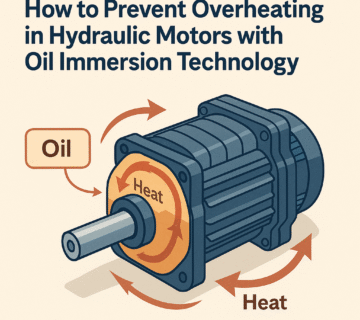Understanding Three-Phase Motors: Benefits, Working Principles, and Applications
Three-phase motors are the backbone of modern industry, powering a wide range of machinery from conveyor belts to compressors and beyond. Known for their efficiency, reliability, and robust design, these motors have become a standard choice for industrial applications. In this blog, we will explore what makes three-phase motors unique, how they work, and why they’re an essential part of industrial setups.
What is a Three-Phase Motor?
A three-phase motor is an electric motor designed to run on a three-phase alternating current (AC) power supply. Unlike single-phase motors, which use one AC voltage, three-phase motors operate using three AC voltages that are each 120 degrees out of phase with one another. This configuration provides a consistent flow of power, leading to smoother operation and higher efficiency.
Figure 1: Structure of a Three-Phase Motor
Key Characteristics of Three-Phase Motors:
- Consistent Power Output: Due to the three-phase power supply, these motors produce a steady torque, reducing vibrations.
- Higher Efficiency: Ideal for industrial and commercial applications that demand continuous power.
- Cost-Effective for Larger Applications: Due to reduced current demand, operating costs are lower for high-power machinery.
Working Principle of a Three-Phase Motor
The three-phase motor operates based on the principles of electromagnetism. Here’s a simplified explanation of how it works:
- Three-Phase Power Input: Three separate AC voltages, spaced 120 degrees apart, power the motor.
- Magnetic Field Creation: Each voltage in the three-phase system induces a magnetic field in the motor’s stator, which is the stationary part of the motor.
- Rotor Movement: The rotating magnetic field generated by the stator interacts with the rotor (the moving part of the motor), creating a continuous force that spins the rotor.
- Continuous Rotation: This rotation is smooth and constant due to the overlapping nature of the three phases, providing a continuous torque output.
This simple yet effective working principle enables three-phase motors to handle heavy loads smoothly and efficiently.
Types of Three-Phase Motors
Three-phase motors come in various types, each suitable for specific applications:
- Induction Motors: These are the most common type, especially in industrial settings. They have a simple design, are easy to maintain, and are highly efficient.
- Synchronous Motors: Unlike induction motors, synchronous motors maintain a constant speed regardless of load. They are ideal for applications where precise speed control is essential.
- Permanent Magnet Motors: These motors have permanent magnets embedded in the rotor, making them highly efficient with high torque density, often used in high-performance applications.
Advantages of Three-Phase Motors
Three-phase motors offer numerous benefits, particularly in industrial environments:
- Efficiency: With their ability to provide a continuous flow of power, these motors are up to 50% more efficient than single-phase motors.
- Cost Savings: Lower operating costs due to higher efficiency and reduced power consumption for large-scale applications.
- Durability: Built to handle heavy loads, these motors last longer and require less maintenance, reducing downtime.
- Simplicity in Design: With fewer moving parts than single-phase motors, they’re less prone to wear and tear.
- Versatility: They can operate at variable speeds, making them suitable for various applications with different load requirements.
Applications of Three-Phase Motors
Due to their power and efficiency, three-phase motors are used across industries for a variety of applications, including:
- Industrial Machinery: Used in conveyor belts, crushers, and grinders where continuous power is crucial.
- HVAC Systems: Powering fans, compressors, and pumps in heating, ventilation, and air conditioning systems.
- Agricultural Equipment: Operating heavy machinery like pumps, grinders, and mills.
- Manufacturing Equipment: Used in automation systems, lathes, and milling machines that require precise and powerful motion.
- Renewable Energy: Integral to wind turbines and other renewable energy systems due to their high efficiency and reliability.
Maintenance Tips for Three-Phase Motors
Regular maintenance ensures three-phase motors operate at peak efficiency and avoid costly breakdowns:
- Regular Lubrication: Lubricate bearings and other moving parts periodically to reduce friction.
- Temperature Monitoring: Keep track of operating temperatures to prevent overheating, which can lead to premature failure.
- Inspect Connections: Ensure all connections are secure to prevent voltage fluctuations and power loss.
- Clean the Motor: Accumulated dust and debris can reduce airflow and lead to overheating, so regular cleaning is essential.
- Alignment Checks: Misalignment can cause excessive wear on components, so check and correct alignment as necessary.



